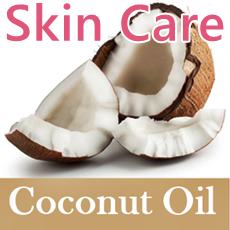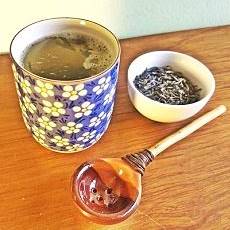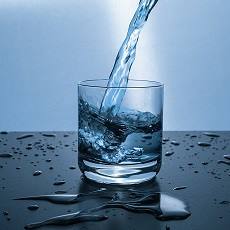The risks of Apple Cider Vinegar
What is Apple Cider Vinegar
First, we must understand what Vinegar is: Apple Cider Vinegar is produced from apples. The sugars contained in the apples are fermented by yeasts which convert them into alcohol resulting in an intermediate product: apple cider.
A second biochemical process kicks in and acetic acid bacteria convert the alcohol (ethanol) into acetic acid turning the apple cider into apple cider vinegar.
Apple Cider Vinegar has a maximum ethanol content of 1% according to the FAO ⁄ WHO Food Codex and the FDA sets a minimum value of 4% acetic acid in vinegar (1). In Europe, the minimum threshold is 5%.
If vinegar is diluted with water (diluted to weaken it, but never below the 4% limit), US labeling requirements (1) indicate that the label must state "diluted with water to XX percent acid strength," filling in the blank with the actual acetic acid content.
Although the FDA has no standards of identity for vinegar, if a product is labeled as "Vinegar," "Cider Vinegar," or "Apple Vinegar" it must be made by an alcoholic fermentation followed by acetous fermentation of "Juice of Apples."
If the vinegar is made from dried apples, apple peels, or apple cores, it has to be clearly stated on the label (Vinegar made from dried apples, apple cores, or apple peels).
Malic acid
Apples contain malic acid and during apple cider fermentation part of this malic acid becomes lactic acid by a process called malo-lactic fermentation.
The malic acid is retained during the production of vinegar. Apple cider vinegar contains roughly 1 part of malic acid for every 7 parts of acetic acid.
Vinegar acid and its health consequences
Dental Erosion
The teeth enamel can be dissolved by acids. This is what bacteria usually do, they eat sugars and excrete acids (mainly lactic acid) which leaches the minerals calcium and phosphorus which make up the hydroxyapatite structure of dental enamel.
The enamel can also dissolve in the presence of acids contained in the food we eat: citric acid in citrus fruits (lime, oranges, lemons) or acids added to sodas (phosphoric acid in cola drinks) are some examples.
Vinegar is acidic and it can erode tooth enamel.
The critical value of acidity that can lead to potential damage to teeth is a pH of 4. Below that value dental erosion will occur (pH 2 to 4), and sometimes the enamel can start demineralizing with pH values as high as 5.5.
pH scale
ph is a scale that measures the acidity or alkalinity of a substance.
It ranges from 0 to 14, and a pH of 7 (midpoint) is considered neutral.
It is a logarithmic scale so a shift in one unit represents a tenfold increase or decrease in acidity.
Avanija (2016) classified beverages based on their acidity and their erosive power (2). The table below shows some selected beverages:
- Minimally erosive (pH above 4.0)
- Erosive (pH above 3 - 3.99)
- Extremely erosive (pH below 3.0)
Minute Maid Lemonade
2.57
Dasani Water Regular
5.03
As you can see, Apple Cider Vinegar with an average pH of 2.78 and Cola drinks with a pH of around 2.75, are both roughly 150 times more erosive than carbonated water with a pH of 5.
Compared to regular tap water (pH range 6.5 - 8.5) apple cider vinegar is 10,000 to 1,000,000 times more acidic (3).
Preventive measures against dental erosion
Wash your mouth with tap water after ingesting vinegar it will remove the acid from your teeth. Don't brush your teeth for at least half an hour after intaking vinegar because your toothbrush may scratch your softened dental enamel.
Excessive ingestion of ACV
Osteoporosis and loss of potassium
Lhotta (1998) reported the case of a 28-year-old woman supplemented her daily meals with half a pint a day (250 ml) of apple cider vinegar
(4). She had been doing this for six years and was suffering from several serious health consequences.
The excessive amounts of cider vinegar were equivalent to approximately 0,5 oz (15 g) of pure acetic acid was converted into bicarbonate in the liver and excreted by the kidneys.
The urine removed the bicarbonate but it also eliminated sodium and potassium. This altered the woman's electrolyte balance.
Electrolytes are critical for many body processes that function by using electric current (charged atoms or molecules called "ions" or "electrolytes). If this balance is disrupted the consequences can be very serious and can even lead to death.
The high content of acetate in the woman's blood (as it moved from intestine to liver) and of bicarbonate (moving from the liver to kidneys) required buffering to maintain the body's acid balance, and this buffering led to a loss of bone mass (calcium ions), which provoked osteoporosis.
Supplementation with Apple cider vinegar tablets
Hill (2005) tested ACV tablets after learning about an "adverse event" involving damage to the esophagus (5). The team evaluated the weight, content, features, and recommended dose of eight different tablet products. They measured the pH and ingredients too and found that:
- Acidity measured by pH ranged from 2.9 to 5.7
- Some tablets contained 3 to 5 times more acid than regular vinegar
- Surprisingly, some tablets contained malic acid; and its content ranged from 0 to 49.12%.
Malic acid is present in fruits, including apples, and is present in apple cider vinegar in small amounts.
The study concluded that: "Doubt remains as to whether apple cider vinegar was in fact an ingredient in the evaluated products. The inconsistency and inaccuracy in labeling, recommended dosages, and unsubstantiated health claims make it easy to question the quality of the products."
Diabetes and Apple Cider Vinegar
A study by Hlebowicz (2007) showed that "vinegar affects insulin-dependent diabetes mellitus patients with diabetic gastroparesis by reducing the gastric emptying rate even further, and this might be a disadvantage regarding to their glycaemic control" (6).
Gastroparesis is a disease that affects the stomach's muscles or the nerves that control them, which interferes with the process of emptying the stomach. It is frequent among people suffering from diabetes. Hlebbowicz found a slower emptying rate implying that ACV worsens the condition.
"Raw" Apple Cider Vinegar
Apple cider vinegar can be sold in different varieties: some are clarified and filtered (and have a translucent appearance), others are not filtered (clarification can remove some of the beneficial components of ACV). Some are pasteurized and others, known as "Raw" ACV are not pasteurized.
Pasteurization
Pasteurization consists of heating food or a liquid (milk, cider, beer) to kill harmful bacteria and make the food safe to eat. It also improves the shelf-life of the products.
It is named after Louis Pasteur (1822 - 1895), who discovered that microbes were responsible for souring wine, beer, and milk. He discovered the process of destroying the bacteria by heating the beverages.
Pasteurization has helped reduce the incidence of diseases such as typhoid fever, polio, scarlet fever, and tuberculosis.
It is generally assumed that the acidic conditions created by the acetic acid in ACV are not favorable for microbial growth and that therefore no further processing is required to remove bacteria.
But the evidence provided by different studies is contradictory: some have found that vinegar solutions were not effective in inhibiting the growth of group D Enterococcus, Escherichia coli or Bacteroides fragilis bacteria; it had limited effectiveness when applied to Staphylococcus aureus and Pseudomonas aeruginosa bacteria (Rund, 1996) (7).
And on the other hand, Hengye (2016) found that "apple vinegar strongly inhibits the growth of pathogenic bacteria such as Staphylococcus epidermidis, Pseudomonas aeruginosa, Proteus mirabilis, and Klebsiella pneumoniae" (8).
The raw material of the apple cider vinegar is "apple cider" which can harbor different pathogenic microbes such as Escherichia coli strains, including the acid-adapted E. coli O157:H7, Salmonella spp. and Listeria monocytogenes (Mak, 2001) (9).
Pasteurization is not obligatory for apple cider producers, but those who do not pasteurize their cider should label it as follows: "WARNING: This product has not been pasteurized and, therefore, may contain harmful bacteria that can cause serious illness in children, the elderly, and persons with weakened immune systems.", as required by 21 CFR 101.17 (g).
There is no legal requirement for apple cider vinegar to be pasteurized either, but our common sense recommendation is that pregnant women, people with weak immune systems, and children should refrain from ingesting unpasteurized ACV.
Burns to the skin in topical applications
Applying ACV on the skin, even if diluted can cause burns.
We will mention two cases of burns caused by apple cider vinegar:
1. Feldstein (2015) reported the case of a 14-year-old-girl googled a recipe to remove "ugly moles" and
came across a "natural remedy" based on apple cider vinegar (10).
She applied several drops of apple cider vinegar on her mole (which was located on her nose) and covered the area with bandages.
The outcome was skin erosion, irritation, and significant reddening of the skin (erythema). The mole peeled off but the risks involved were high: scarring, hyperpigmentation, or even a malignant transformation of a benign mole.
Feldstein warns that "common vinegars are weak acids that contain 4 to 8 percent acetic acid, which can erode the skin and cause significant chemical burns, especially when applied under occlusion."
2. Bunick (2012) reported chemical burns in an 8-year-old-boy treated with ACV by his mother.
The woman had applied cotton balls soaked with ACV on the child's leg by his knee and covered them with adhesive bandages for 8 hours (11).
The boy reported a strong burning sensation and developed a low fever and an irritant contact dermatitis chemical burn due to the vinegar.
Vinegar is an acid and can cause burns.



